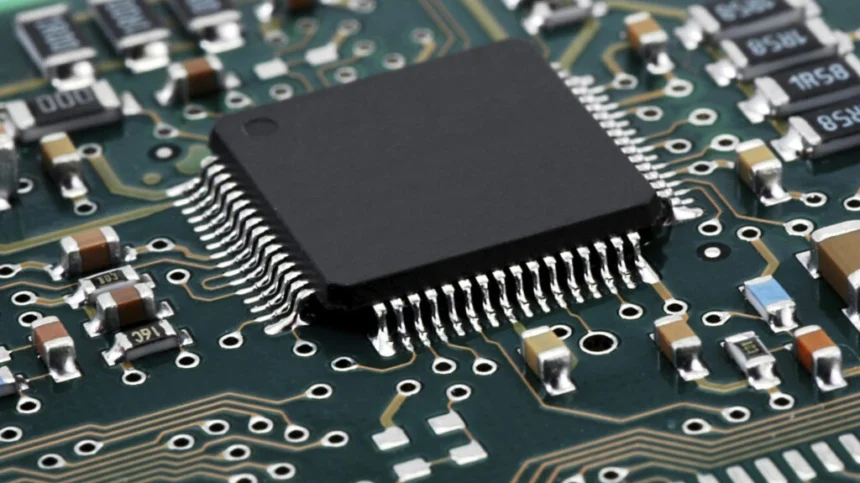Introduction
Ball Grid Array (BGA) chipping is a critical issue in electronics manufacturing that can compromise the reliability and functionality of products. As more devices shrink in size and complexity, BGA components are increasingly used for their ability to provide higher pin density and smaller footprints. However, these components are sensitive to mechanical stress, and improper handling can lead to chipping. Adhering to IPC-610 standards ensures that manufacturers can mitigate this risk.
In this guide, we will explore BGA chipping per IPC-610, covering its causes, effects, and how to minimize defects in manufacturing. We will also provide actionable insights into the best practices to follow to remain compliant with IPC-610 and ensure product reliability.
Understanding BGA Chipping: Causes and Impact
BGA chipping happens when part of the BGA package becomes damaged, often due to mechanical or thermal stress. This damage can occur during manufacturing, handling, or the reflow process.
Common Causes of BGA Chipping
Mechanical Stress:
BGAs are prone to damage during assembly if handled roughly or dropped.
Thermal Stress:
Excessive temperatures or rapid temperature changes during soldering can weaken the package, making it susceptible to cracking.
Vibration and Shock:
Improper packaging or rough handling during shipping and transport can also cause BGA components to chip.
Impact on Functionality and Reliability
Chipped BGAs can lead to electrical failures, resulting in costly rework, product recalls, or performance issues in the field. Even if the defect doesn’t cause immediate failure, over time, environmental factors like temperature fluctuations can exacerbate the problem, leading to intermittent connections.
IPC-610 Standards: Overview and Importance
IPC-610 sets the standard for the acceptability of electronic assemblies, including inspection criteria for BGA chipping. It provides manufacturers with a reference point to ensure their assemblies are high quality and free from defects.
What Is IPC-610 and Why Is It Important?
IPC-610 is a widely recognized standard for ensuring the quality and reliability of electronic assemblies. It outlines the acceptable levels of defects for various components, including BGA chipping. By following these guidelines, manufacturers can ensure their products meet industry standards for performance and durability.
Key Sections of IPC-610 Related to BGA Chipping
Several sections in IPC-610 address the potential issues with BGAs, from placement to solder joint integrity. Specific guidelines focus on preventing defects like chipping during handling, inspection, and rework processes, ensuring that manufacturers can identify and rectify problems before products leave the production line.
Materials and Design Considerations to Prevent BGA Chipping
Choosing Appropriate Materials
Selecting the right materials for both the BGA and the PCB is essential. For example, choosing substrates that match the thermal expansion properties of the BGA package can prevent mechanical stress during thermal cycling.
Role of PCB Design in Preventing BGA Chipping
IPC-610 suggests that designers avoid placing BGAs near the edges of PCBs, where they may be subject to increased mechanical forces. Routing traces in a way that minimizes stress on the BGA pads can also help.
Tips for Designing Boards with Minimal Stress on BGAs
Use Stiffeners:
Add mechanical stiffeners to support BGAs during assembly.
Evenly Distribute Components:
Avoid crowding multiple BGAs in a single area, as this can lead to uneven stress during thermal cycling.
Use High-Quality Solder Mask:
A high-quality solder mask can reduce the risk of solder bridging and protect against thermal stress.
Best Practices for Manufacturing to Prevent BGA Chipping
Proper Handling Techniques During Manufacturing
Implementing proper handling techniques can greatly reduce the risk of BGA chipping. For example, using vacuum-based pick-and-place tools can help reduce the mechanical stress that manual handling introduces.
Role of Automated Equipment in Reducing Risk
Automated systems are precise and consistent, reducing the likelihood of human error. Pick-and-place machines, for example, apply uniform pressure and ensure the components are correctly aligned, minimizing the risk of mechanical stress that leads to chipping.
How IPC-610 Addresses Handling Practices
IPC-610 emphasizes strict handling protocols to ensure that components, especially sensitive BGAs, are not subjected to unnecessary stress. This includes guidelines for using automated equipment, inspection protocols, and proper manual handling techniques.
Soldering Techniques: Ensuring Durability and Minimizing Chipping
Importance of Proper Soldering Practices
Using the right soldering techniques ensures the durability of BGA connections and minimizes the risk of chipping. This includes controlling the reflow temperature and ensuring the solder paste is applied uniformly.
Common Soldering Errors Leading to Chipping
Errors such as excessive heat or uneven solder application can result in thermal stress, leading to BGA chipping. Insufficient solder can also lead to weak connections, which increases the likelihood of mechanical damage during operation.
IPC-610 Recommended Techniques for Reliable Solder Joints
IPC-610 advises manufacturers to:
Use reflow profiles that prevent thermal shock.
Apply solder paste uniformly to ensure even bonding.
Ensure proper cooling to avoid stressing the BGA package.
Inspection and Testing for BGA Chipping per IPC-610
Inspection is critical for identifying BGA chipping and other defects. IPC-610 provides guidance on inspection techniques that help manufacturers detect and address these issues early.
Methods for Inspecting BGAs for Signs of Chipping
Automated Optical Inspection (AOI): Detects visible defects in BGAs, including chipping.
X-ray Inspection: Helps identify hidden defects in solder joints or package integrity.
Visual Inspection: Manual inspection by trained personnel to look for surface-level chipping.
Non-Destructive Testing Techniques as per IPC-610
Non-destructive testing (NDT) techniques like x-ray imaging and AOI allow manufacturers to check for defects without damaging the component. These methods are crucial for ensuring that BGA components meet the high standards required by IPC-610.
How to Interpret Inspection Results and Take Corrective Action
When defects like BGA chipping are detected, manufacturers must decide whether to repair, rework, or scrap the component. IPC-610 provides guidelines on acceptable levels of defects, helping manufacturers make informed decisions about product quality.
Repair and Rework of Chipped BGAs: Following IPC-610 Guidelines
When and How to Repair Chipped BGAs
In some cases, it may be possible to repair chipped BGAs without compromising their functionality. IPC-610 outlines the steps manufacturers should take to ensure that repairs are conducted correctly and do not introduce additional defects.
IPC-610 Best Practices for Rework
Reworking BGA components requires specialized equipment and techniques to prevent further damage. Manufacturers must follow IPC-610 guidelines, which recommend using controlled heating and precision tools to avoid stressing the component.
Tools and Techniques for Safe Repair According to IPC-610
Rework Stations:
Use controlled heat and precise alignment tools to safely rework BGAs.
Hot Air Guns:
Used carefully to heat the component without damaging the surrounding area.
Soldering Irons with Fine Tips:
Prevents excessive heat from spreading to nearby components.
Preventing BGA Chipping During Shipping and Handling
Proper packaging and handling during shipping are essential to prevent BGA chipping. IPC-610 outlines guidelines for protecting components during transport.
How to Package and Ship BGA Components to Prevent Chipping
Use Shock-Absorbing Packaging: This minimizes the impact of drops or vibrations during shipping.
Anti-Static Bags: Protect against static discharge, which can damage delicate BGA components.
Storage Conditions That Help Reduce Risk
Components should be stored in temperature- and humidity-controlled environments to avoid thermal stress that could lead to BGA chipping. IPC-610 recommends specific storage conditions that reduce environmental impact on sensitive components.
IPC-610 Handling Guidelines for Maintaining Component Integrity
IPC-610 emphasizes minimizing physical handling to prevent damage. Automated handling systems or specially trained personnel should be employed when handling BGA components.
Quality Control and Documentation: Ensuring Compliance with IPC-610
Ensuring compliance with IPC-610 requires robust quality control systems and detailed documentation.
Role of Documentation in Maintaining IPC-610 Compliance
Documenting every step of the manufacturing process ensures that any issues can be traced back to their source. This is essential for maintaining IPC-610 compliance and for identifying areas where improvements can be made.
How to Implement a Quality Control System That Minimizes BGA Chipping
Routine Inspections:
Regularly inspect components during each stage of manufacturing.
Training:
Ensure that all personnel are trained on IPC-610 standards.
Automation:
Use automated inspection systems to improve consistency and accuracy.
Case Studies:
Successful Implementation of BGA Chipping Prevention
Several companies have successfully implemented IPC-610 standards to reduce BGA chipping.
Real-World Examples
Company A: Reduced BGA chipping by 30% by switching to automated handling and inspection systems.
Company B: Implemented IPC-610-compliant quality control systems and saw a significant decrease in defective products.
Conclusion
BGA chipping is a common issue in electronics manufacturing that can have a significant impact on product reliability. By adhering to BGA chipping per IPC-610 guidelines, manufacturers can minimize defects, improve product performance, and reduce the risk of costly recalls or rework. Best practices include careful handling, proper soldering techniques, and comprehensive inspection procedures. Ensuring compliance with IPC-610 not only improves the quality of the final product but also increases customer trust in the long-term reliability of electronic assemblies.
FAQs
What is BGA chipping, and why is it a concern in manufacturing?
BGA chipping refers to damage to the package of a Ball Grid Array component, which can affect the functionality and reliability of the device. It is a significant concern because it can lead to electrical failures.
How do IPC-610 standards help in preventing BGA chipping?
IPC-610 provides guidelines for handling, soldering, inspection, and repair that reduce the likelihood of BGA chipping during manufacturing and transport.
What are the most common causes of BGA chipping?
The most common causes include mechanical stress, improper soldering, and rough handling during manufacturing or shipping.
Can BGA chipping be repaired, or do chipped components need replacement?
Depending on the severity of the damage, BGA chipping can sometimes be repaired following IPC-610 guidelines. However, in severe cases, the component may need to be replaced.
What inspection methods are recommended to detect BGA chipping?
Automated Optical Inspection (AOI), x-ray imaging, and manual visual inspection are commonly used to detect BGA chipping.








